Fifteen years ago, NASA's Chandra X-ray Observatory was launched into space aboard the Space Shuttle Columbia.
Since its deployment on July 23, 1999, Chandra has helped revolutionise our understanding of the universe through its unrivalled X-ray vision.
Chandra, one of NASA's current "Great Observatories," along with the Hubble Space Telescope and Spitzer Space Telescope, is specially designed to detect X-ray emission from hot and energetic regions of the universe.
With its superb sensitivity and resolution, Chandra has observed objects ranging from the closest planets and comets to the most distant known quasars. It has imaged the remains of exploded stars, or supernova remnants and discovered black holes across the universe.
Please click NEXT to read 10 facts about the observatory...
Chandra, our window to deep space
Image: A small, dense object only 12 miles in diameter is responsible for this beautiful X-ray nebula that spans 150 light years. At the center of this image, made by NASA's Chandra X-ray Observatory, is a very young and powerful pulsar, known as PSR B1509-58, or B1509 for short.Fact # 1: NASA's premier X-ray observatory was named the Chandra X-ray Observatory in honour of the late Indian-American Nobel laureate, Subrahmanyan Chandrasekhar.
Known to the world as Chandra (which means "moon" or "luminous" in Sanskrit), he was widely regarded as one of the foremost astrophysicists of the twentieth century.
Chandra emigrated in 1937 from India to the United States, where he joined the faculty of the University of Chicago, a position he remained at until his death. He and his wife became American citizens in 1953.
Please …
Chandra, our window to deep space
Image: NASA's Chandra X-ray Observatory has helped create a spectacular view of Centaurus A that shows the effects of a supermassive black hole. At the center of this nearby galaxy, a central black hole powers jets and lobes that flare against a background of stars and stardust. In the upper left of the image, an X-ray jet extends about 13,000 light years away from the black hole. The material in that jet is travelling at about half the speed of light.Fact # 2: The Chandra X-ray Observatory is the world’s most powerful X-ray telescope.
It has eight times greater resolution and will be able to detect sources more than 20-times fainter than any previous X-ray telescope.
Please …
Chandra, our window to deep space
Image: M51, whose name comes from being the 51st entry in Charles Messier's catalog, is considered to be one of the classic examples of a spiral galaxy. At a distance of about 30 million light years from Earth, it is also one of the brightest spirals in the night skyFact # 3: The Chandra X-ray Observatorys operating orbit takes it 200-times higher than the Hubble Space Telescope.
During each orbit of the Earth, Chandra travels one-third of the way to the Moon.
Please …
Chandra, our window to deep space
Image: Cassiopeia A, or Cas A, is the remnant of a star that exploded about 300 years ago. The X-ray image shows an expanding shell of hot gas produced by the explosion. This gaseous shell is about 10 light years in diameter, and has a temperature of about 50 million degrees. Image taken in 1999.Fact # 4: It took almost four centuries to advance from Galileos first telescope to NASAs Hubble Space Telescope an increase in observing power of about a half-billion times.
NASA's Chandra X-ray Observatory is about one-billion times more powerful than the first X-ray telescope, and we have made that leap in slightly more than three decades.
Please …
Chandra, our window to deep space
Image: This image shows the famous Crab Nebula. In 1054 AD, Chinese astronomers and others around the world noticed a new bright object in the sky. This "new star" was, in fact, the supernova explosion that created what is now called the Crab Nebula. At the center of the Crab Nebula is an extremely dense, rapidly rotating neutron star left behind by the explosion. The neutron star, also known as a pulsar, is spewing out a blizzard of high-energy particles, producing the expanding X-ray nebula seen by Chandra. In this new image, lower-energy X-rays from Chandra are red, medium energy X-rays are green, and the highest-energy X-rays are blue.Fact # 5: The Chandra X-ray Observatory's resolving power is 0.5 arc-seconds -- equal to the ability to read the letters of a stop sign at a distance of 12 miles.
Put another way, Chandra's resolving power is equivalent to the ability to read a 1-centimeter newspaper headline at the distance of a half-mile.
Please …
Chandra, our window to deep space
Image: This image of the Pinwheel Galaxy, or also known as M101, combines data in the infrared, visible, ultraviolet and X-rays from four of NASA's space-based telescopes. This multi-spectral view shows that both young and old stars are evenly distributed along M101's tightly-wound spiral arms. Such composite images allow astronomers to see how features in one part of the spectrum match up with those seen in other parts. It is like seeing with a regular camera, an ultraviolet camera, night-vision goggles and X-ray vision, all at the same time.Fact # 6: The Chandra X-ray Observatory, with its Inertial Upper Stage and support equipment, is the largest and heaviest payload ever launched by the Space Shuttle.
Please …
Chandra, our window to deep space
Image: When radiation and winds from massive young stars impact clouds of cool gas, they can trigger new generations of stars to form. This is what may be happening in this object known as the Elephant Trunk Nebula (or its official name of IC 1396A). X-rays from Chandra (purple) have been combined with optical (red, green, and blue) and infrared (orange and cyan) to give a more complete picture of this sourceFact # 7: Although nothing can escape the incredible gravity of a black hole, not even light, the Chandra X-ray Observatory is able to study particles up to the last millisecond before they are sucked inside.
Please …
Chandra, our window to deep space
Image: Just weeks after NASA's Chandra X-ray Observatory began operations in 1999, the telescope pointed at Centaurus A (Cen A, for short). This galaxy, at a distance of about 12 million light years from Earth, contains a gargantuan jet blasting away from a central supermassive black hole. Since then, Chandra has returned its attention to this galaxy, each time gathering more data. And, like an old family photo that has been digitally restored, new processing techniques are providing astronomers with a new look at this old galactic friend.Fact # 8: Chandra orbits far above Earth's X-ray absorbing atmosphere at an altitude up to 139,000 km, allowing for long observations unobscured by Earth's shadow.
Please …
Chandra, our window to deep space
Image: An optical image, from the Digitized Sky Survey, of a large field centered on the Flame Nebula. A comparison with the composite image from Chandra and Spitzer - shown as an overlay - demonstrates how powerful X-ray and infrared images are for studying star forming regions. The central cluster of stars, NGC 2024, is clearly observed in the X-ray and optical images but is not visible in the optical image.Fact # 9: The Chandra X-ray Observatory allows scientists from around the world to obtain unprecedented X-ray images and spectra of violent, high-temperature events and objects to help us better understand the structure and evolution of our universe.
Please …
Chandra, our window to deep space
Image: Multiple images of a distant quasar are visible in this combined view from NASA's Chandra X-ray Observatory and the Hubble Space Telescope. The Chandra data were used to directly measure the spin of the supermassive black hole powering this quasar. This is the most distant black hole where such a measurement has been made, as reported in our press release.Fact # 10: Chandra serves as a unique tool to study detailed physics in a unique laboratory -- the universe itself -- one that cannot be replicated here on Earth.
Please click MORE to read related further…

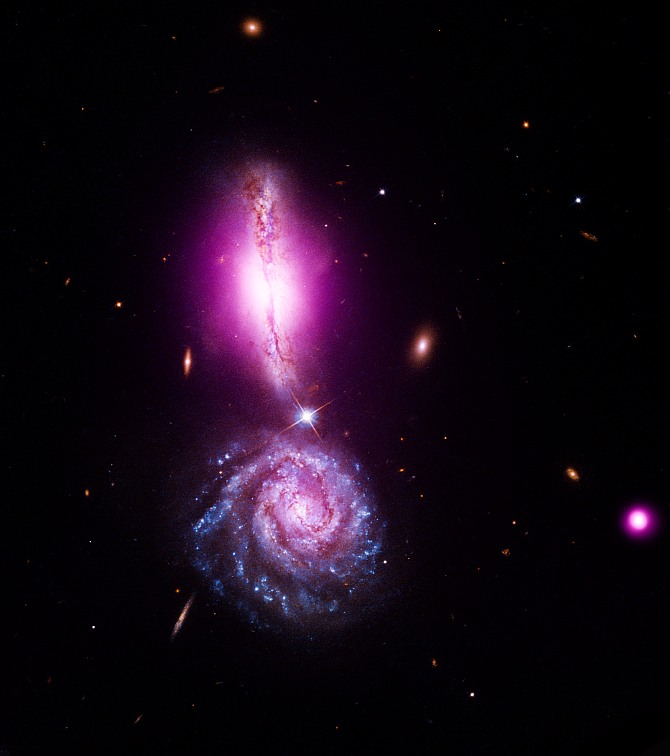
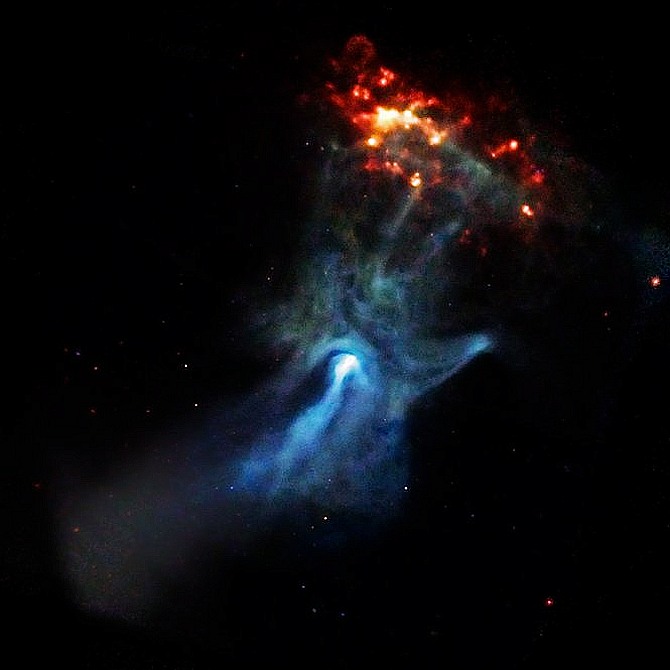
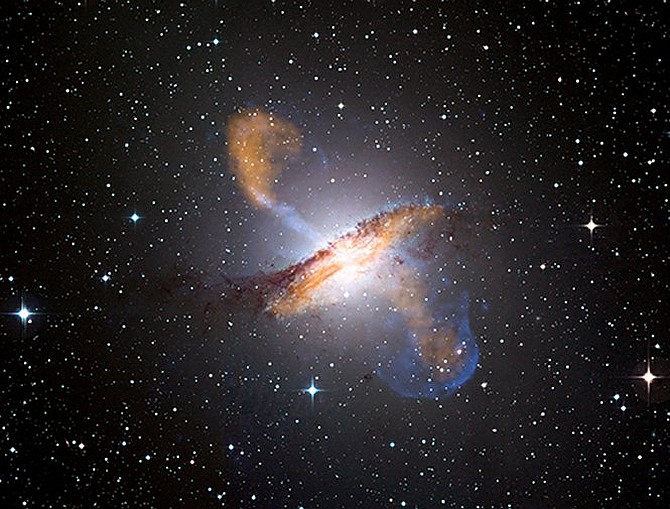
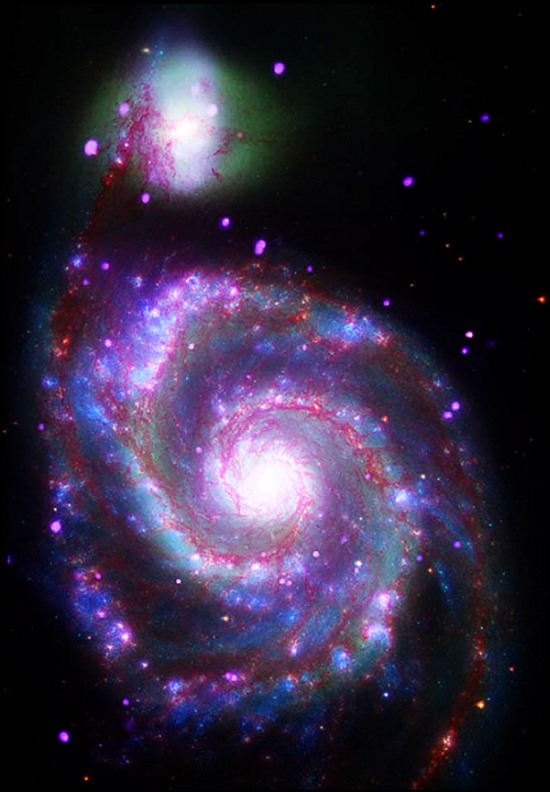
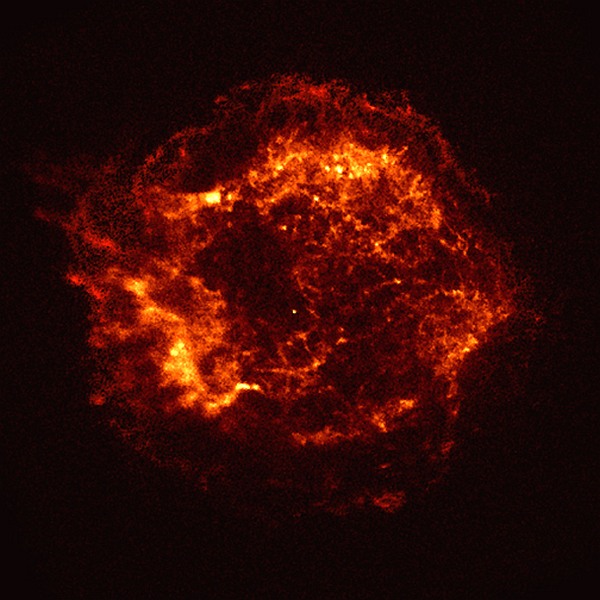

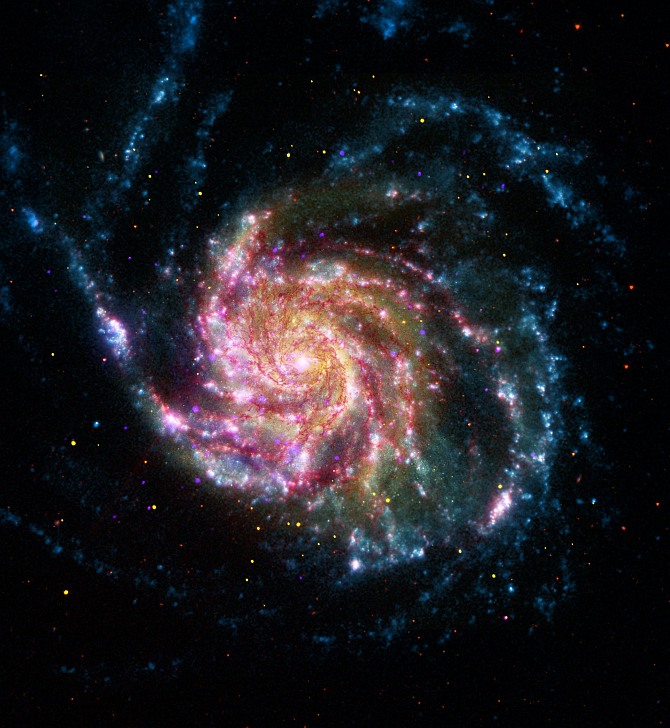
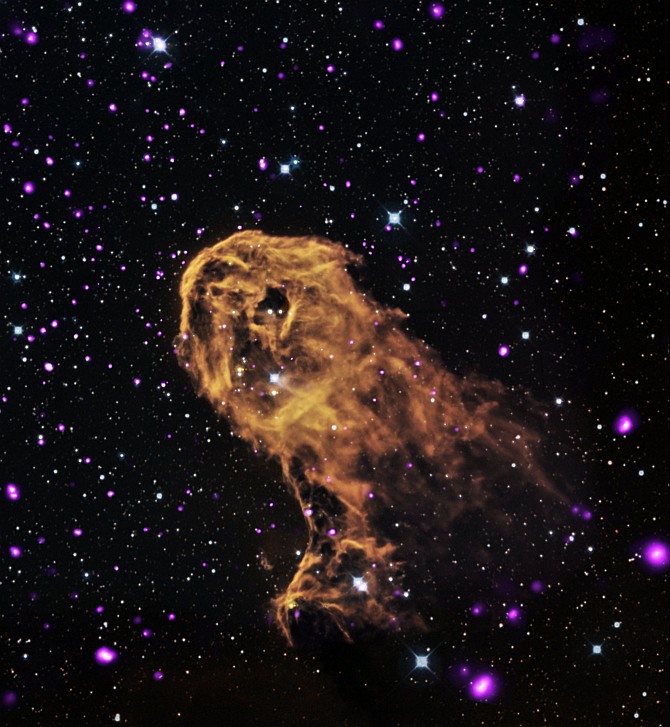
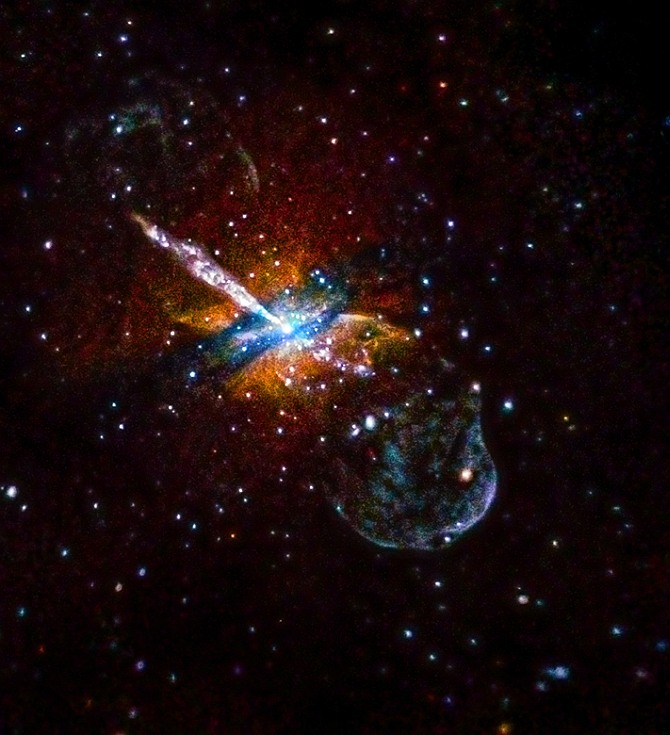
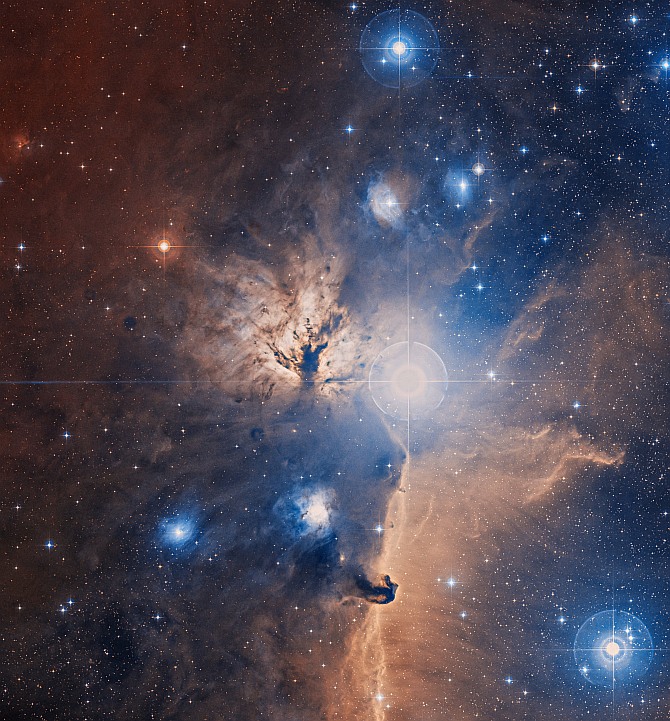
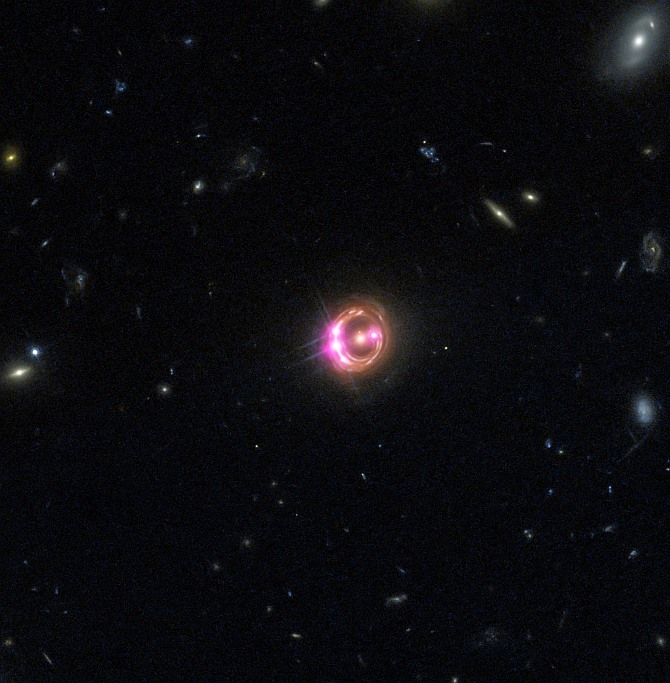
article